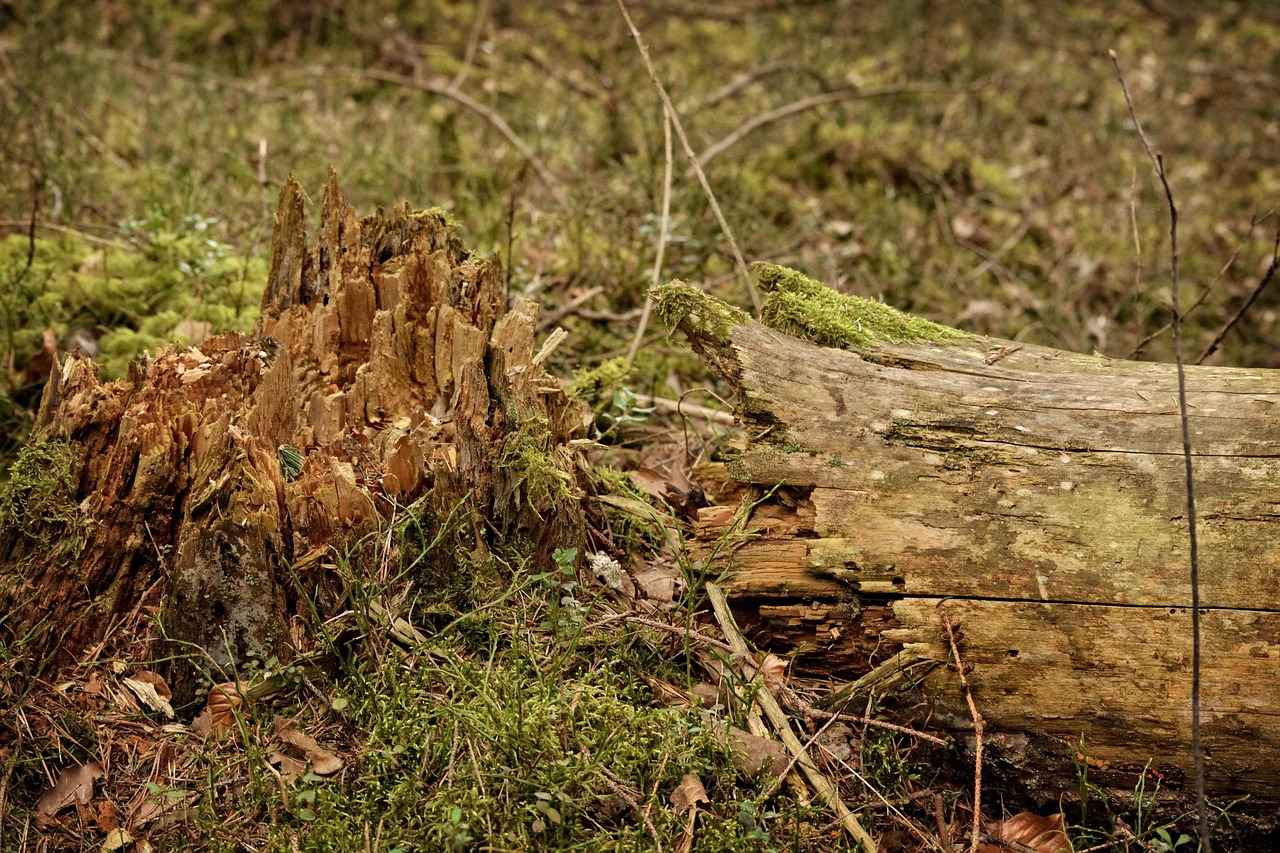Driving through Texas is an adventure that many travelers embark upon, whether for business or leisure. With its vast landscapes and diverse attractions, understanding how long it takes to drive across Texas can help you plan a memorable road trip. This article delves into the time required for this journey, key routes to consider, and essential travel tips to enhance your experience.
Texas is served by several major highways that facilitate efficient travel across the state. The most notable include:
- Interstate 10 (I-10) – Running east to west, this highway connects cities like El Paso and San Antonio.
- Interstate 20 (I-20) – This route traverses from east Texas to west Texas, linking cities such as Dallas and Midland.
- Interstate 35 (I-35) – A vital north-south route that connects cities like Austin and San Antonio.
The time it takes to drive across Texas varies considerably based on several factors, including your starting point, destination, and current traffic conditions. On average, driving from the eastern border to the western border takes about 12 to 14 hours, covering approximately 800 miles.
The distance from the eastern border, near Louisiana, to the western border, adjacent to New Mexico, is roughly 800 miles. This distance can impact your travel time significantly, depending on your chosen route and driving speed.
Traffic can greatly affect your travel plans. Major metropolitan areas like Houston and Dallas often experience heavy congestion, particularly during rush hours. Being aware of peak traffic times can help you plan your journey more effectively.
Choosing the right time to travel can enhance your experience. Generally, weekdays tend to be less congested compared to weekends. Early morning departures can also help you avoid heavy traffic, making your drive smoother and more enjoyable.
Texas offers several scenic routes that can make your drive more delightful. Consider the Hill Country route, which features beautiful landscapes, or the Texas Coastal Highway, which provides stunning views of the Gulf of Mexico.
Planning strategic stops can break up your journey and make it more enjoyable. Texas is rich in attractions, including:
- Austin – Known for its live music scene and vibrant culture.
- San Antonio – Home to the famous Alamo and River Walk.
- El Paso – Offers a unique blend of Texan and Mexican culture.
Texas boasts stunning natural attractions, including national parks and scenic byways. Places like Big Bend National Park offer breathtaking views and a variety of outdoor activities, making it a perfect stop for nature enthusiasts.
Driving in Texas presents unique challenges. Here are some essential tips to ensure a smooth journey:
- Prepare Your Vehicle – Ensure your vehicle is road-ready with regular maintenance checks.
- Pack Wisely – Bring along snacks, water, a first-aid kit, and entertainment options for passengers.
- Stay Informed – Check weather forecasts and road conditions before your trip.

What Are the Major Highways for Driving Through Texas?
When planning a road trip across the vast expanse of Texas, understanding the key highways is essential for an efficient journey. Texas is home to several major highways that not only connect its sprawling cities but also facilitate seamless travel across the state. Here’s a closer look at these highways and what they offer.
- Interstate 10 (I-10): This is one of the longest interstate highways in the United States, stretching from California to Florida. In Texas, I-10 runs from the western border near El Paso to the eastern border at Orange, covering approximately 880 miles. It serves as a vital route for both commercial and recreational travel.
- Interstate 20 (I-20): Connecting the cities of Midland and Dallas, I-20 is another major east-west corridor that facilitates travel across Texas. It spans around 636 miles within the state, providing access to various attractions and cities along the way.
- Interstate 35 (I-35): Running north-south, I-35 connects the Mexican border at Laredo to the Canadian border at Duluth, Minnesota. In Texas, it links major cities such as San Antonio, Austin, and Dallas, making it a crucial highway for both local and interstate travel.
- U.S. Highway 287: This highway runs diagonally across Texas and connects several important cities, including Fort Worth and Wichita Falls. U.S. 287 is notable for its scenic views and access to smaller towns, making it a popular choice for travelers seeking a less congested route.
- U.S. Highway 90: Stretching from the southern border at Del Rio to the eastern border at Orange, U.S. 90 offers a picturesque drive through Texas. It passes through various landscapes, including deserts and forests, providing travelers with unique sights and experiences.
Each of these highways plays a significant role in the overall transportation network of Texas. They not only facilitate efficient travel but also connect travelers to a variety of attractions, from bustling cities to serene natural parks.
When planning your route, it’s important to consider the traffic patterns on these highways. Major cities like Houston and Dallas often experience congestion, particularly during rush hours. Therefore, choosing the right time to travel can significantly affect your journey’s duration.
Additionally, many of these highways offer access to scenic routes that showcase Texas’s diverse landscapes. For example, traveling along I-10 can lead you through beautiful desert scenery, while U.S. 90 provides views of charming small towns and lush greenery.
In summary, understanding the major highways in Texas is crucial for effective trip planning. By familiarizing yourself with the routes available, you can ensure a smoother and more enjoyable road trip experience. Whether you are traveling for business or leisure, these highways will guide you through the heart of Texas, revealing the state’s rich culture and stunning scenery along the way.

How Long Does It Take to Drive Across Texas?
Driving across Texas is an adventure that many travelers undertake, but the duration of the journey can vary widely. The vastness of the state means that the time it takes to drive from one end to the other can be influenced by several factors. In this section, we will explore these factors, including starting points, destinations, and traffic conditions, to give you a clearer picture of what to expect on your road trip.
The distance from the eastern border to the western border of Texas is approximately 800 miles. This distance is a significant factor in determining how long your drive will take. For instance, if you’re driving from Orange on the east side to El Paso on the west, you can expect your travel time to be around 12 to 14 hours under normal conditions. However, this estimate can change based on various elements.
- Starting Point: Your journey’s starting point can greatly affect your travel time. For example, driving from Dallas to San Antonio is around 275 miles and can take approximately 4 to 5 hours without heavy traffic.
- Destination: The end point of your trip also matters. If you are heading to a remote area, the drive might take longer due to less direct routes.
- Traffic Conditions: Major cities like Houston and Austin are notorious for heavy traffic, especially during peak hours. This can add significant time to your journey, sometimes extending a trip by several hours.
To further illustrate, consider the time it takes to drive through Texas during different times of the week. Weekdays generally see less congestion compared to weekends, making it a more favorable time for travel. Early morning departures can also help you avoid the bulk of rush hour traffic, allowing for a smoother journey.
Additionally, weather conditions can play a critical role in your travel time. Rain, snow, or extreme heat can slow down your drive and require more frequent breaks. Therefore, it is advisable to check the weather forecast before setting out on your journey.
In summary, while the distance of approximately 800 miles from east to west Texas provides a baseline for how long it might take to drive across the state, many variables can influence your actual travel time. By considering your starting point, destination, and traffic conditions, you can better plan your road trip and enjoy all that Texas has to offer along the way.
What Is the Distance from East to West Texas?
When planning a road trip across Texas, it’s essential to understand the vastness of the state. The distance from the eastern border to the western border of Texas is approximately 800 miles. This significant distance can greatly impact your travel time, depending on various factors such as your speed, route, and the number of stops you plan to make.
Driving straight across Texas without any interruptions can take around 12 to 14 hours under normal conditions. However, this estimate can fluctuate based on the following:
- Speed Limits: Texas highways generally have speed limits ranging from 60 to 75 mph, but be mindful of varying limits in urban areas.
- Traffic Conditions: Major cities like Houston, Dallas, and San Antonio often experience heavy traffic, particularly during rush hours. This can add significant time to your journey.
- Road Conditions: Weather can also play a role. Rain or storms can slow down your travel, so it’s wise to check forecasts before heading out.
Given these factors, it’s advisable to plan your trip with flexibility in mind. Consider taking breaks to rest, refuel, and explore interesting sites along the way. Texas is rich in culture and history, and there are numerous attractions that can enhance your travel experience.
Some popular routes include:
- Interstate 10: This highway runs from the eastern border near Orange to the western border at El Paso, offering a direct path across the state.
- Interstate 20: This route takes you through cities like Midland and Abilene, providing a glimpse into the heart of Texas.
- Highway 90: For those looking for a more scenic drive, Highway 90 offers beautiful landscapes and charming small towns.
In summary, while the distance from east to west Texas is about 800 miles, the time it takes to traverse this vast state can vary widely. By considering factors such as speed, traffic, and road conditions, as well as planning for enjoyable stops, you can make your Texas road trip a memorable adventure.
How Does Traffic Affect Travel Times?
Understanding how traffic impacts travel times is essential for anyone planning a road trip through Texas. The state is vast, and while the open highways can provide smooth sailing, major urban areas like Houston and Dallas often face significant congestion. This congestion can drastically alter your travel plans, making it crucial to consider traffic patterns when mapping out your journey.
During peak hours, which typically occur on weekday mornings and late afternoons, these cities can experience heavy traffic. In Houston, for instance, the I-10 and I-45 corridors are notorious for their slowdowns, while Dallas sees similar issues along the I-35E and I-30 routes. This congestion can lead to delays that extend your travel time by 30 minutes to several hours, depending on the severity of the traffic.
To navigate these challenges effectively, consider the following tips:
- Plan Your Route Wisely: Utilize GPS apps that provide real-time traffic updates. These tools can help you identify the fastest routes and avoid congested areas.
- Travel During Off-Peak Hours: If your schedule allows, aim to travel early in the morning or later in the evening to bypass the worst traffic.
- Stay Informed: Check local traffic reports before you hit the road. Being aware of accidents or construction can help you make informed decisions about your route.
In addition to urban traffic, road construction is another factor that can affect travel times across Texas. The state frequently undertakes projects to improve its highways, which can lead to lane closures and detours. It’s advisable to check for any ongoing construction on your planned route ahead of time.
Moreover, weather conditions can play a significant role in travel times. Texas is known for its unpredictable weather, with sudden rainstorms and storms that can slow down traffic considerably. Always check the weather forecast and be prepared for changing conditions.
Lastly, consider making strategic stops along your journey. Not only does this break up the drive, but it can also help you avoid spending excessive time in traffic. Texas is filled with charming towns and attractions that can enrich your travel experience. For example, taking a detour to explore Fredericksburg or visiting the historic sites in San Antonio can provide a refreshing change of pace.
In summary, understanding how traffic affects travel times in Texas is essential for a successful road trip. By planning your route, staying informed about traffic conditions, and being flexible with your travel schedule, you can minimize delays and enhance your overall experience. Whether you’re driving through bustling cities or the open countryside, being prepared will ensure that your journey across Texas is as enjoyable as possible.
What Are the Best Times to Travel?
When planning a road trip through Texas, understanding the best times to travel can significantly enhance your overall experience. Choosing the right time not only impacts your travel speed but also determines how much you enjoy the journey. Here, we explore the optimal times for traveling through the Lone Star State.
Traveling on weekdays is often more advantageous than weekends. Many people take to the roads during weekends, leading to increased congestion, especially in popular tourist areas. By choosing to travel from Monday to Thursday, you can enjoy a smoother ride with fewer delays. This is particularly true for major highways such as I-10 and I-35, which are known for heavy traffic on weekends.
Another effective strategy is to schedule your travel for the early morning hours. Departing at dawn allows you to avoid the rush hour traffic that typically builds up as the day progresses. By hitting the road before sunrise, you not only dodge heavy traffic but also get to enjoy the serene beauty of Texas waking up. The cooler temperatures in the morning can also make for a more comfortable drive.
In addition to time of day, consider the season in which you travel. Texas experiences peak tourist seasons during the summer and around holidays. Traveling during the off-peak seasons, such as late fall or early spring, can lead to fewer crowds and more enjoyable experiences at attractions. You’ll find that hotels and attractions often offer better rates during these times as well.
In today’s digital age, leveraging technology can help you make informed decisions about when to travel. Utilizing traffic apps like Waze or Google Maps can provide real-time updates on traffic conditions. These tools can help you avoid congested areas and suggest alternative routes, ensuring that you spend less time in traffic and more time enjoying your trip.
Texas is home to numerous festivals and events throughout the year. While these can be exciting to attend, they can also lead to increased traffic. Researching local events in your travel area can help you plan your trip around them, either by avoiding those dates or by incorporating them into your itinerary. This foresight can greatly enhance your travel experience.
Ultimately, the key to a successful road trip through Texas lies in strategic planning. By choosing to travel on weekdays, departing early, considering off-peak seasons, using traffic apps, and planning around local events, you can ensure a more enjoyable and efficient journey. Remember, the right timing can transform your road trip into a memorable adventure.
What Scenic Routes Should You Consider?
When planning a road trip through Texas, one of the most enjoyable aspects is exploring its scenic routes. These routes not only offer beautiful views but also allow travelers to experience the rich diversity of the state’s landscapes and cultural attractions. Here, we delve into some of the most breathtaking scenic routes that you should consider for an unforgettable journey.
Opting for scenic routes can transform a standard drive into an adventure. Not only do these routes provide stunning vistas, but they also lead to charming towns, historical landmarks, and natural wonders. Here are a few reasons to explore Texas’ scenic routes:
- Stunning Landscapes: Experience the beauty of rolling hills, expansive deserts, and lush forests.
- Unique Attractions: Discover hidden gems like local diners, art installations, and historical sites.
- Wildlife Viewing: Many scenic routes pass through areas rich in wildlife, offering opportunities for birdwatching and photography.
Here are some of the most popular scenic routes in Texas that promise captivating views and memorable experiences:
Starting in Fredericksburg and winding through the picturesque Texas Hill Country, Highway 16 is famous for its wildflower displays in spring and charming small towns. Don’t miss a stop in Luckenbach, known for its music scene and rustic charm.
Stretching from Study Butte to Presidio, Texas 170 runs alongside the Rio Grande and offers breathtaking views of the Chisos Mountains. This route is perfect for those who enjoy outdoor activities like hiking and photography.
This 30-mile loop showcases some of the most stunning landscapes in the state. Travelers can witness the dramatic contrast between desert and mountain terrains, making it an ideal spot for nature enthusiasts. Be sure to stop at the various overlooks for breathtaking views of the Rio Grande and the surrounding canyons.
While not exclusively in Texas, the Texas portion of Route 66 offers a nostalgic journey through historic towns and quirky roadside attractions. Experience the charm of towns like Amarillo and Glenrio, where you can find vintage diners and classic motels.
Driving through Texas on these scenic routes can be a delightful experience. Here are some tips to enhance your journey:
- Plan Your Stops: Identify key attractions and plan your stops to make the most of your trip.
- Check the Weather: Weather conditions can change rapidly, especially in mountainous areas, so be prepared.
- Stay Hydrated: Carry plenty of water and snacks, especially on longer stretches without services.
In summary, Texas offers a wealth of scenic routes that showcase the state’s natural beauty and cultural richness. Whether you’re driving through the hills of the Hill Country or along the banks of the Rio Grande, these routes promise an enriching experience that goes beyond just reaching your destination.

What Are the Best Stops Along the Way?
When embarking on a road trip across Texas, it’s essential to consider the journey as more than just the destination. Planning strategic stops can significantly enhance your travel experience, breaking up long stretches of driving and allowing you to explore the rich culture, history, and natural beauty that Texas has to offer. Here are some of the best stops along the way that you won’t want to miss.
Making strategic stops during your road trip can transform a long drive into an adventure filled with memorable experiences. These breaks not only provide rest but also allow you to discover local attractions, sample regional cuisine, and immerse yourself in the unique character of Texas towns.
- Austin: Known for its vibrant music scene and cultural festivals, Austin is a must-visit. Don’t forget to explore the Texas State Capitol and indulge in some famous BBQ.
- San Antonio: Home to the historic Alamo and the picturesque River Walk, San Antonio offers a blend of history and leisure. Enjoy a riverside meal and take a stroll along the beautiful pathways.
- Dallas: A city that combines modernity with tradition, Dallas is known for its shopping and dining. Visit the Sixth Floor Museum to learn about JFK’s legacy.
- El Paso: Situated near the Mexican border, El Paso showcases a unique blend of cultures. Explore the Franklin Mountains State Park for breathtaking views and outdoor activities.
Texas is also home to stunning natural landscapes that are perfect for outdoor enthusiasts. Here are some natural attractions to consider:
- Big Bend National Park: This expansive park offers dramatic canyons, desert landscapes, and the iconic Rio Grande. It’s ideal for hiking, camping, and stargazing.
- Guadalupe Mountains National Park: Known for its rugged mountains and diverse wildlife, this park is perfect for hiking and offers some of the best views in Texas.
- Lake Texoma: A popular destination for water sports, fishing, and camping, Lake Texoma provides a refreshing break from the road.
In addition to cities and natural parks, Texas is dotted with unique attractions that can add flavor to your road trip:
- Cadillac Ranch: Located near Amarillo, this public art installation features half-buried Cadillacs covered in graffiti. It’s a quirky photo opportunity!
- Bluebonnet Fields: If you’re traveling in spring, don’t miss the stunning bluebonnet fields that blanket the Texas countryside.
- Marfa: Known for its mysterious lights and art installations, Marfa is a small town that has gained a cult following among artists and travelers alike.
As you plan your road trip across Texas, remember that the journey is just as important as the destination. By incorporating these stops into your itinerary, you’ll create a rich and enjoyable travel experience that showcases the best of what Texas has to offer.
Which Cities Are Must-Visit Stops?
Embarking on a road trip through Texas presents an incredible opportunity to explore its vibrant cities, each offering a unique blend of culture, history, and attractions. Among the most notable stops are Austin, San Antonio, and El Paso, which are rich in experiences that can enhance your journey.
Austin, the state capital, is renowned for its live music scene and cultural diversity. The city is home to the famous South by Southwest (SXSW) festival, which attracts artists and visitors from around the globe. Beyond music, Austin boasts a variety of outdoor activities, including hiking at the Barton Springs Pool and exploring the scenic Lady Bird Lake. Don’t miss the chance to savor the local cuisine, especially the mouthwatering barbecue and Tex-Mex dishes that define the city’s culinary landscape.
San Antonio is steeped in history, most notably marked by the Alamo, a UNESCO World Heritage site. This city offers a captivating blend of Spanish colonial heritage and modern attractions. Visitors can stroll along the picturesque River Walk, lined with shops, restaurants, and vibrant nightlife. The annual Fiesta San Antonio celebrates the city’s culture and community with parades, food, and music. For those interested in art and history, the San Antonio Museum of Art and the Spanish Governor’s Palace are must-see locations.
El Paso, located at the western tip of Texas, offers a unique blend of Mexican and American cultures. The city’s proximity to the border provides visitors with the chance to experience authentic Mexican cuisine and local traditions. The Franklin Mountains State Park is ideal for outdoor enthusiasts, offering hiking trails with stunning views of the desert landscape. Additionally, the El Paso Museum of Art features an impressive collection of regional and international art, making it a cultural hub worth visiting.
- In Austin: Don’t miss the Texas State Capitol, known for its stunning architecture and historical significance.
- In San Antonio: Visit the San Antonio Missions National Historical Park to learn about the area’s rich history.
- In El Paso: Explore the Chamizal National Memorial, which celebrates the cultural heritage of the region.
Each of these cities not only offers its own unique attractions but also serves as a gateway to exploring the diverse landscapes and cultures of Texas. By incorporating these stops into your road trip itinerary, you can ensure a well-rounded and enriching travel experience that showcases the best of what Texas has to offer.
What Natural Attractions Should You Explore?
When it comes to exploring the natural beauty of Texas, the state offers a plethora of stunning attractions that are sure to captivate any traveler. From majestic mountains to serene rivers, Texas is a haven for outdoor enthusiasts. Below, we delve into some of the most remarkable natural attractions that you should consider adding to your itinerary.
Texas is home to several national parks that showcase its diverse landscapes. Among these, Big Bend National Park stands out as a must-visit destination. This park features breathtaking views of the Chisos Mountains and the Rio Grande, providing ample opportunities for hiking, camping, and stargazing. The park’s vast desert landscapes and unique geological formations make it a paradise for photographers and nature lovers alike.
Another gem in Texas is Guadalupe Mountains National Park, which boasts the highest peak in Texas, Guadalupe Peak. The park offers stunning views and a variety of trails that cater to different skill levels. Hikers can explore the diverse flora and fauna, while wildlife enthusiasts may catch glimpses of deer, mountain lions, and various bird species. The park’s rich history, including remnants of the area’s mining past, adds another layer of intrigue.
In addition to national parks, Texas features numerous scenic byways that provide a unique perspective of the state’s beauty. The Texas Hill Country Scenic Byway is particularly popular, offering winding roads through rolling hills, picturesque vineyards, and charming small towns. Travelers can stop at local wineries, art galleries, and antique shops along the way, making it a delightful experience.
Texas is also home to hidden natural wonders that are less frequented but equally breathtaking. The Devil’s River State Natural Area is a prime example, featuring pristine waters and rugged terrain. This area is perfect for kayaking, fishing, and hiking, providing a peaceful escape from the hustle and bustle of city life. Another hidden gem is the Enchanted Rock State Natural Area, known for its massive pink granite dome that attracts rock climbers and hikers.
- Hiking: Many parks offer trails ranging from easy walks to challenging hikes, allowing visitors to explore the natural beauty at their own pace.
- Camping: Experience the great outdoors by camping under the stars in designated areas within the parks.
- Wildlife Watching: Keep an eye out for the diverse wildlife that inhabits these areas, including unique bird species and mammals.
- Photography: Capture the stunning landscapes and vibrant sunsets that Texas has to offer.
In summary, Texas is a treasure trove of natural attractions that cater to a wide range of interests. Whether you’re hiking in the mountains, exploring scenic byways, or discovering hidden gems, the Lone Star State promises an unforgettable outdoor experience. Make sure to include these destinations in your road trip plans to fully appreciate the beauty of Texas.

What Are Some Essential Tips for Driving in Texas?
Driving in Texas can be an exhilarating experience, but it also comes with its unique set of challenges and considerations. The vastness of the state means that drivers must be prepared for various conditions, from bustling urban traffic to serene rural highways. Being ready can ensure a smoother and safer road trip experience.
- Know the Speed Limits: Texas has different speed limits depending on the type of road. On highways, the speed limit can reach up to 75 mph, while urban areas typically have lower limits. Always pay attention to posted signs to avoid fines.
- Stay Hydrated: The Texas heat can be intense, especially during summer months. Keeping water in your vehicle is essential to stay hydrated, particularly on long stretches of road where services may be sparse.
- Prepare for Weather Changes: Texas weather can be unpredictable. Be ready for sudden rainstorms or fog, especially in the spring and fall. Check weather forecasts before your trip and adjust your plans accordingly.
- Watch for Wildlife: When driving through rural areas, be cautious of wildlife crossing the road, particularly at dawn and dusk. Animals such as deer can pose serious risks, so remain vigilant.
- Plan Your Route: With Texas being so large, planning your route is crucial. Use GPS or maps to find the best roads and consider scenic routes that may offer breathtaking views and interesting stops.
Before embarking on your Texas road trip, ensure your vehicle is road-ready. Here are essential checks:
- Oil Change: Ensure your engine oil is fresh to avoid overheating or engine failure.
- Check Tires: Inspect tire pressure and tread depth. Properly inflated and well-maintained tires enhance safety and fuel efficiency.
- Brake Inspection: Make sure your brakes are functioning correctly. This is vital for safe driving, especially on hilly terrains.
Effective packing can significantly enhance your travel experience. Consider bringing:
- Snacks and Drinks: Pack a variety of snacks and plenty of water to keep everyone energized and hydrated.
- First-Aid Kit: Always have a first-aid kit on hand for minor injuries or emergencies.
- Entertainment Options: Bring books, games, or music playlists to keep passengers entertained during long stretches of driving.
Familiarize yourself with local driving laws to avoid any legal issues:
- Seat Belts: Texas law mandates that all passengers wear seat belts. Ensure everyone in your vehicle is buckled up.
- Cell Phone Use: While Texas does not have a statewide ban on handheld devices, many cities do. It’s best to use hands-free options if you need to make calls.
- Alcohol Regulations: The legal blood alcohol limit is 0.08%. Always designate a sober driver if you plan to drink.
By adhering to these essential tips and preparations, you can ensure a safe and enjoyable driving experience in Texas. Whether you’re exploring the vibrant cities or the tranquil countryside, being informed and ready will help you make the most of your journey.
How to Prepare Your Vehicle for a Long Drive?
Preparing your vehicle for a long drive is crucial to ensure a safe and enjoyable journey. Whether you’re heading across Texas or embarking on a cross-country adventure, taking the time to check your vehicle can prevent unexpected breakdowns and enhance your overall travel experience. Here are some essential steps to ensure your vehicle is road-ready:
Before hitting the road, it’s important to conduct a thorough inspection of your vehicle. Key areas to check include:
- Fluids: Ensure that your engine oil, coolant, brake fluid, and windshield washer fluid are at appropriate levels.
- Tires: Check tire pressure, tread depth, and look for any visible damage. Properly inflated and well-maintained tires are essential for safety and fuel efficiency.
- Brakes: Inspect your brake pads and discs to ensure they are in good condition. If you hear any unusual noises, have them checked by a professional.
If your vehicle is due for maintenance, consider replacing worn parts before your trip. This can include:
- Wiper Blades: Clear visibility is crucial, especially during inclement weather. Replace old wiper blades to ensure they function properly.
- Air Filter: A clean air filter improves engine performance and fuel efficiency. Consider replacing it if it’s dirty.
A dead battery can quickly derail your trip. Make sure to:
- Inspect Battery Terminals: Clean any corrosion and ensure connections are tight.
- Test Battery Health: If your battery is more than three years old, consider having it tested or replaced.
Planning your route is essential for a long drive. Consider the following:
- Map Out Fuel Stops: Knowing where to refuel can help you avoid running low on gas in remote areas.
- Identify Rest Areas: Schedule regular breaks to stretch and refresh, which can help maintain alertness.
Even with thorough preparation, emergencies can happen. An emergency kit can be invaluable. Include:
- First Aid Supplies: A basic first-aid kit can address minor injuries.
- Tools: A small toolkit can help with minor repairs.
- Emergency Supplies: Items like a flashlight, blankets, and non-perishable snacks can be lifesavers.
Before you leave, verify that your vehicle’s registration and insurance are current. This can prevent legal issues and provide peace of mind during your travels.
By following these steps, you can ensure that your vehicle is well-prepared for a long drive. Regular maintenance and thorough checks not only enhance safety but also contribute to a more enjoyable travel experience. Remember, a little preparation goes a long way in making your journey smooth and stress-free!
What Should You Pack for Your Road Trip?
Packing wisely can greatly enhance your travel experience, especially on a long road trip through Texas. The right items can make your journey more comfortable and enjoyable for everyone involved. Here’s a detailed look at what you should consider packing for your adventure.
- Snacks: Having a variety of snacks is crucial. Choose non-perishable items like nuts, granola bars, and dried fruit to keep everyone energized. Fresh fruits and veggies can also be refreshing and healthy options.
- Water: Staying hydrated is vital, especially in the Texas heat. Bring a cooler with bottled water or reusable water bottles to refill at rest stops.
- First-Aid Kit: Accidents can happen, so a well-stocked first-aid kit is essential. Include items like band-aids, antiseptic wipes, pain relievers, and any personal medications.
- Entertainment: Long hours on the road can lead to boredom. Bring along audiobooks, playlists, or games to keep passengers engaged. Consider downloading movies or shows for younger travelers to enjoy.
- Pillows and Blankets: For longer trips, having travel pillows and lightweight blankets can make resting in the car more comfortable.
- Comfortable Clothing: Dress in layers and opt for comfortable clothing. This allows you to adapt to changing temperatures inside and outside the vehicle.
- Footwear: Wear shoes that are easy to slip on and off, especially if you plan on making frequent stops.
- GPS or Navigation Apps: Having a reliable navigation system is crucial for finding the best routes and avoiding traffic. Download offline maps in case of poor signal areas.
- Chargers: Bring chargers for all electronic devices, including a car charger for phones and tablets. Consider a portable charger for backup power.
- Dash Cam: Installing a dash cam can provide security and help document your journey for memories or potential incidents.
- Emergency Kit: In addition to a first-aid kit, include items like a flashlight, jumper cables, and a tire inflator. Being prepared can save you from being stranded.
- Travel Documents: Keep your driver’s license, vehicle registration, insurance information, and any necessary travel permits easily accessible.
- Cash and Coins: While most places accept cards, having cash on hand can be useful for tolls or small purchases in remote areas.
By packing these essential items and considering the comfort and entertainment of all passengers, you can ensure a smoother and more enjoyable road trip across Texas. Remember, the journey is just as important as the destination, so make the most of your travel experience!
Frequently Asked Questions
- How long does it typically take to drive across Texas?
The time it takes to drive across Texas can vary widely, but on average, it takes about 12 to 14 hours to cover the approximately 800 miles from east to west. However, this can change based on your route, traffic, and how many stops you make along the way!
- What are the major highways to consider for a road trip through Texas?
Some of the major highways include Interstate 10 (I-10), which runs east to west, and Interstate 35 (I-35), which travels north to south. These highways connect you to many cities and attractions, making your journey smoother!
- What is the best time to travel through Texas?
Weekdays are generally less crowded than weekends, and early mornings can help you dodge the traffic jams that often occur in cities like Houston and Dallas. Timing your trip can really make a difference!
- Are there any must-visit cities along the route?
Absolutely! Cities like Austin, San Antonio, and El Paso are not to be missed. Each city has its own unique vibe and attractions, ensuring your road trip is packed with memorable experiences!
- What should I pack for my Texas road trip?
Be sure to bring snacks, plenty of water, a first-aid kit, and entertainment options for the passengers. Keeping everyone comfortable and engaged will make the long drive a lot more enjoyable!




